As the first hotel of the French Beaumier Group in Switzerland, the Grand Hotel Belvédère in Wengen stands for a new interpretation of Alpine hospitality—purposefully restored, close to nature and deeply rooted in the history of its surroundings.
»The hotel was the international home of the cosmopolitan«, wrote the author Stefan Zweig in his 1942 autobiography The World of Yesterday (OT: Die Welt von Gestern). For the well-traveled Zweig, the so-called grand hotels were far more than mere accommodation—they embodied places of international encounter, style, and social etiquette, thus laying the foundation for a form of travel he regarded as a truly cosmopolitan way of life. Even today, the symbolic power emanating from grand hotels remains unbroken.
Heritage & awakening
The Grand Hotel Belvédère in Wengen rises high above the Lauterbrunnen Valley, set against the majestic backdrop of the Bernese Alps. Built in 1912 during the golden age of the Belle Époque, it stood at the height of tourism when the small village became a place of alpine longing for European society. The Belvédère welcomed guests from all over the world—wealthy, cosmopolitan, and sophisticated. However, the splendor of those years faded amid the political, social, and economic upheavals of the 20th century. The hotel itself oscillated between operation and vacancy—frozen in time, in any case.
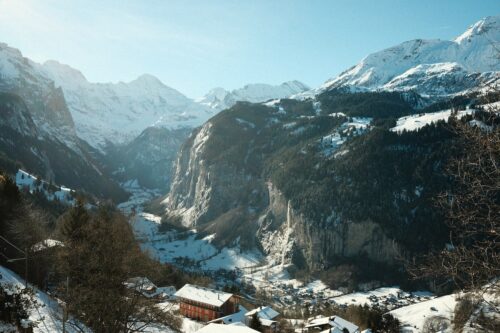
In 2024, the Grand Hotel Belvédère was acquired by the French hotel group Beaumier and reopened. The company, known for its thoughtfully designed boutique hotels, has breathed new life into the Belvédère following extensive renovation and restoration in keeping with its listed status—with a modern take on its rich heritage and with respect for the authentic values of this unique location.
Down-to-earth scenography & contemporary art
To live up to the reputation of the grand hotels as places of timeless style, history and, above all, attitude, the Swiss architecture firms Complete Works, Crausaz Tremblay and Clavien & Associés were entrusted with the redesign. Their approach is defined by a respectful handling of historical elements, the conversion and expansion of the existing structure, as well as the careful preservation, ambitious uncovering, restoration, and in some cases even reconstruction of original decorative features such as wall paintings, stucco ceilings, and wood panelling from the early 20th century in the restaurants and lobbies. The aesthetic diversity is expressed in the seemingly effortless integration of the nostalgic charm of the so-called Heimatstil and—by contrast—the almost opulent elements of Art Nouveau.

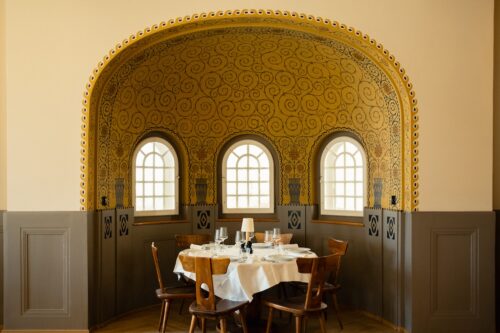
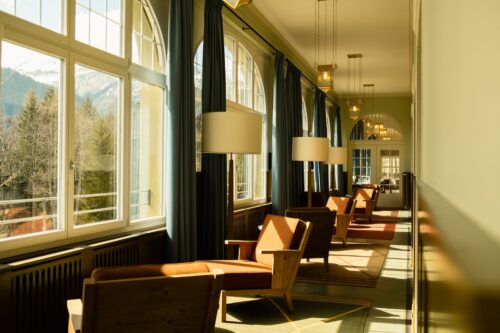
The 90 completely renovated rooms and suites were also the result of an intensive engagement with the local heritage. Featuring custom-made wooden furniture, natural materials and contemporary design, they reinterpret the region’s Alpine tradition with clean lines and modern comfort. Each room also includes exclusive artworks, such as those by textile artist Manon Daviet. For the Grand Hotel Belvédère, she created a series of tufted pieces whose motifs—grazing cows and lush green pastures—playfully reflect on the clichés of Swiss folk culture and the rich local flora and fauna, rendering the idyllic Wengen landscape almost surreal.
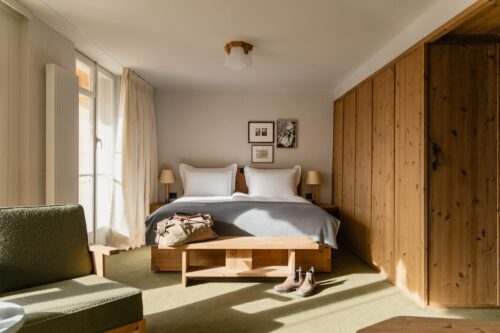
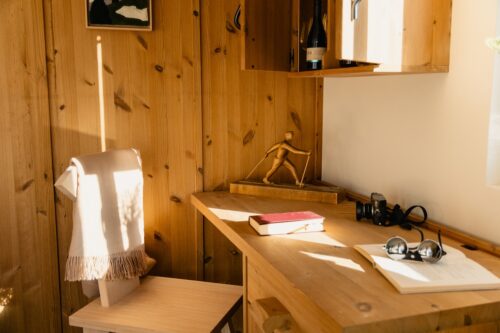
In addition to archival materials acquired at auctions that document the history of Wengen and its surroundings, the public areas also showcase contemporary works by Swiss artists—including pieces by Douglas Mandry that explore themes of landscape and territory. Aligned with the creative vision of the hotel and its spectacular setting—with unobstructed views of two of the most iconic Alpine peaks, the Jungfrau (4,158 m) and the Mönch (4,107 m)—Mandry’s series The Monuments Project reflects on photographic narratives of what once was and what may lie ahead.
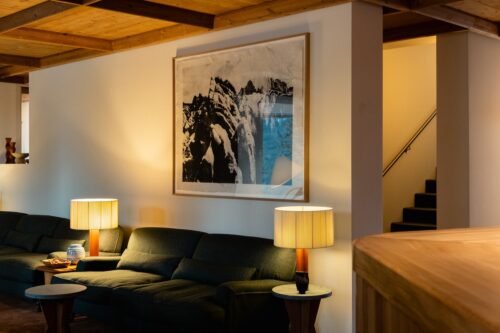
The artist works with iconic imagery from the past century, transferring photographs of snow-covered mountains from the 1930s and 1940s onto worn »glacier covers« using a lithographic process. These protective textiles are currently used in Switzerland to slow the melting of glaciers. His works oscillate between a sense of mourning for a mythical era and the attempt to preserve it through technological means—reflecting on the complex relationship between progress and climate change.
»…like a brutalist relic…«
— Valéry Clavien, Clavien & Associés
The newly created, exclusive spa area, on the other hand, defies all local tradition and playful charm. Partly integrated into the stone slope, the building completely dispenses with classic »spa glitter«—brutalist in its design, monolithic in its effect. Reduced to atmospheric axes of light, the warming quality of mineral materials, the meditative presence of water and a captivating silence, an unexpected spatial dramaturgy unfolds: created as a place of contemplation and reduction. An indoor and outdoor pool, sauna, steam bath, cold water pool and relaxation area are inspired by Japanese onsen, a place of silence and purity.

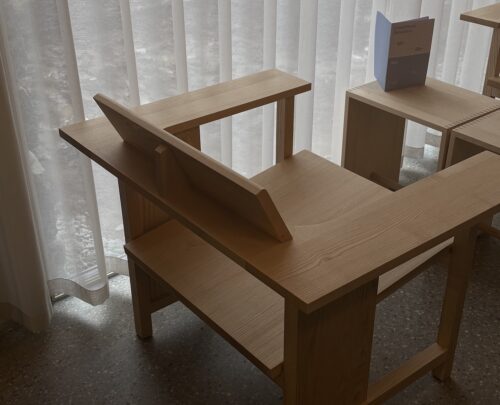
In contrast to the spa itself, the minimalist seating furniture by internationally acclaimed designer Konstantin Grcic pays homage to the traditional alpine design language—crafted from simple wooden elements in keeping with local custom. Always with the majestic backdrop in sight: towering glacier cliffs, cascading waterfalls, and the restorative power of the surrounding nature. Elements that also resonate with the hotel’s own design fabric and atmospheric presence.
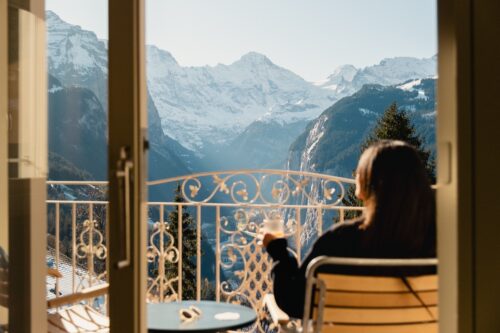
The recent revival of the Grand Hotel Belvédère by Beaumier continues to embody the glamorous qualities of a bygone era, as nostalgically described by Stefan Zweig. At the same time, the hotel opens a new chapter—reinterpreted and thoughtfully reimagined yet deeply rooted—not only to carry forward the tradition of Alpine grand hotels but also to guide this historically rich establishment with sensitivity and enthusiasm into a new, yet-to-be-defined era. [DM]

